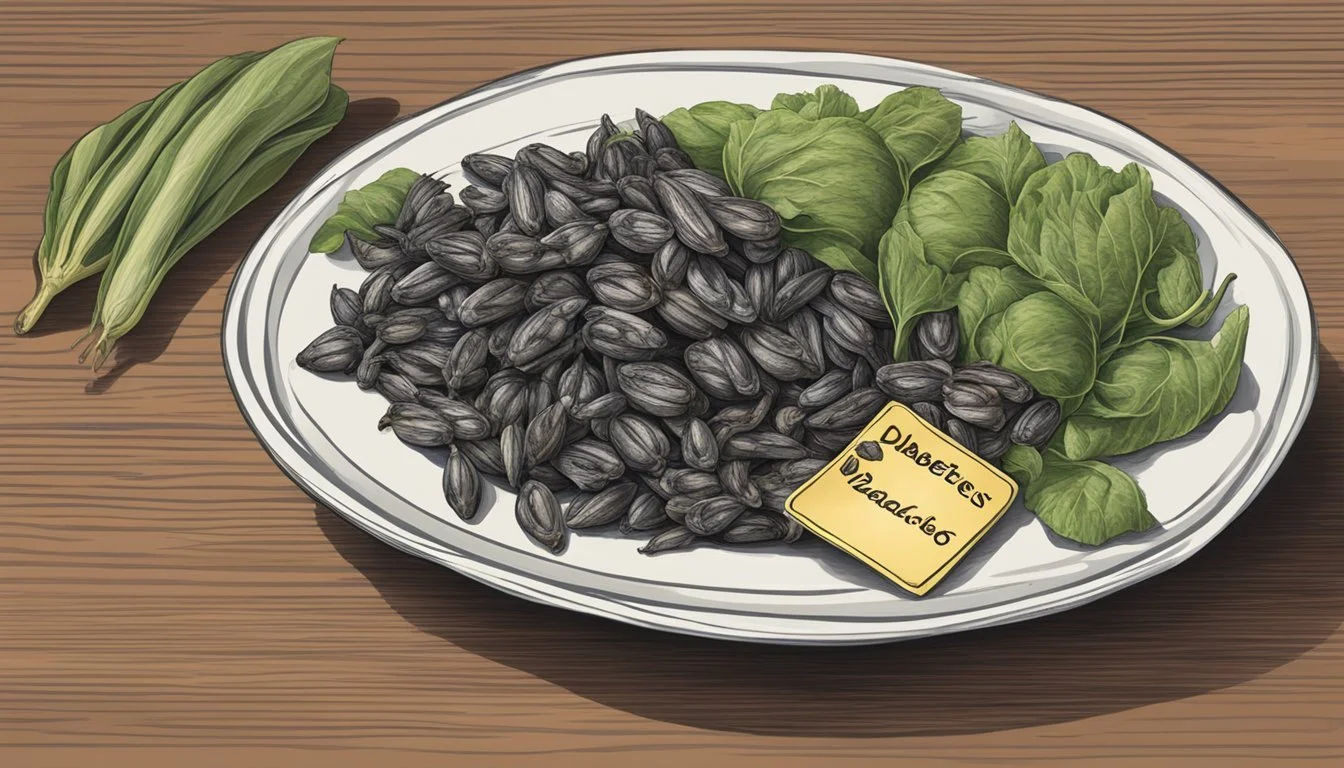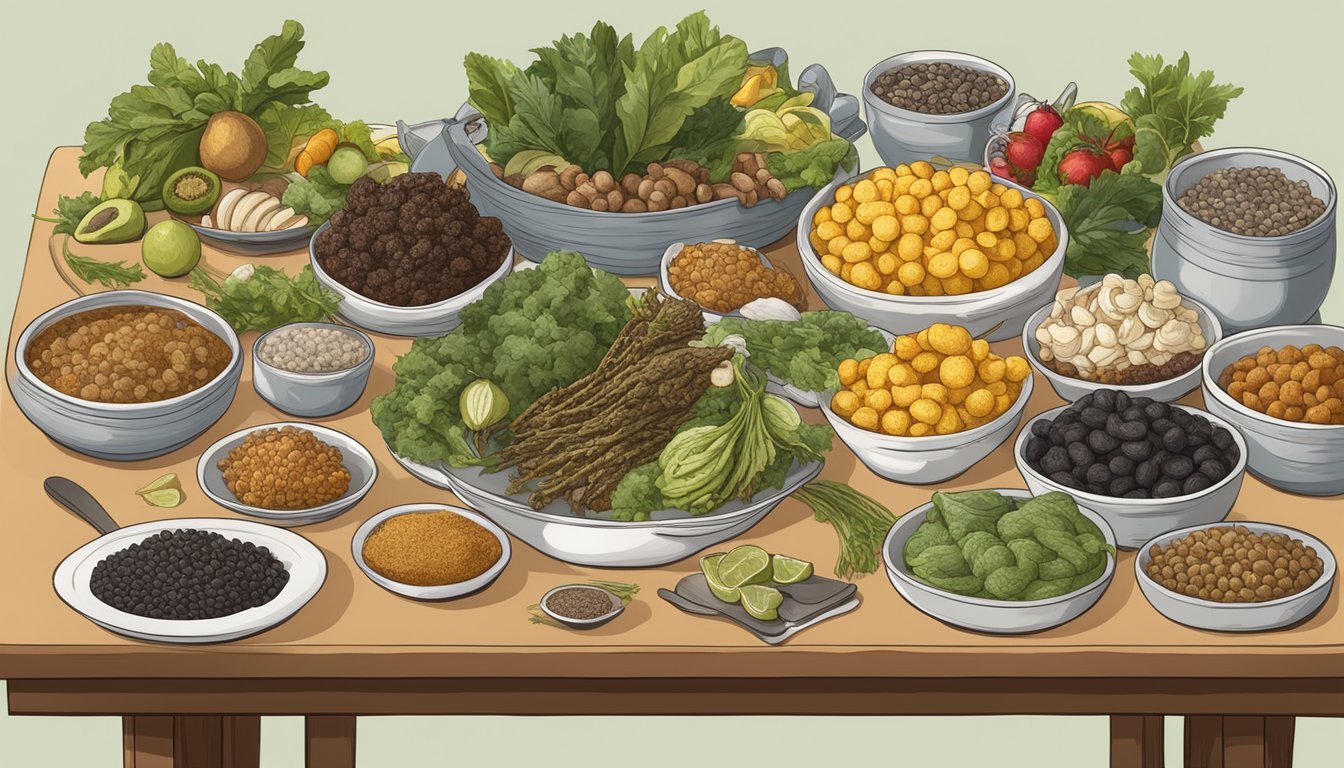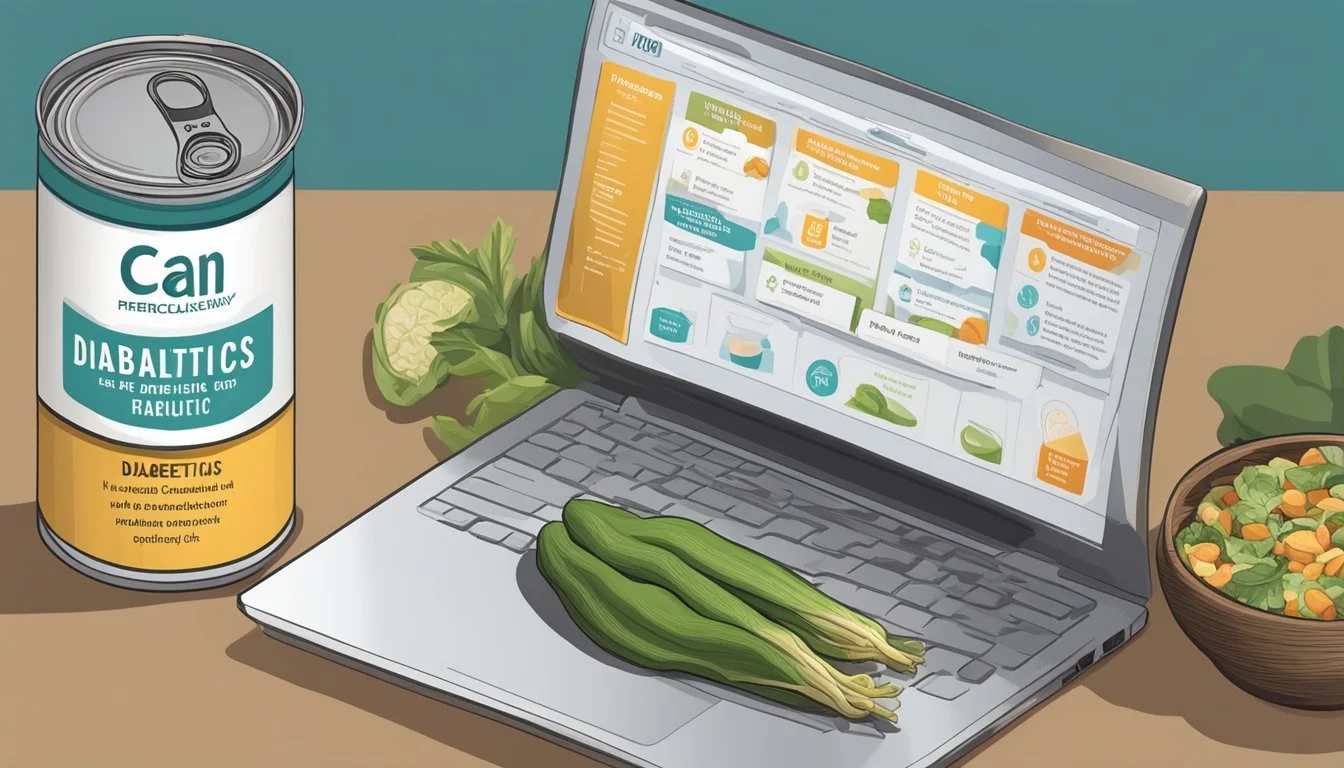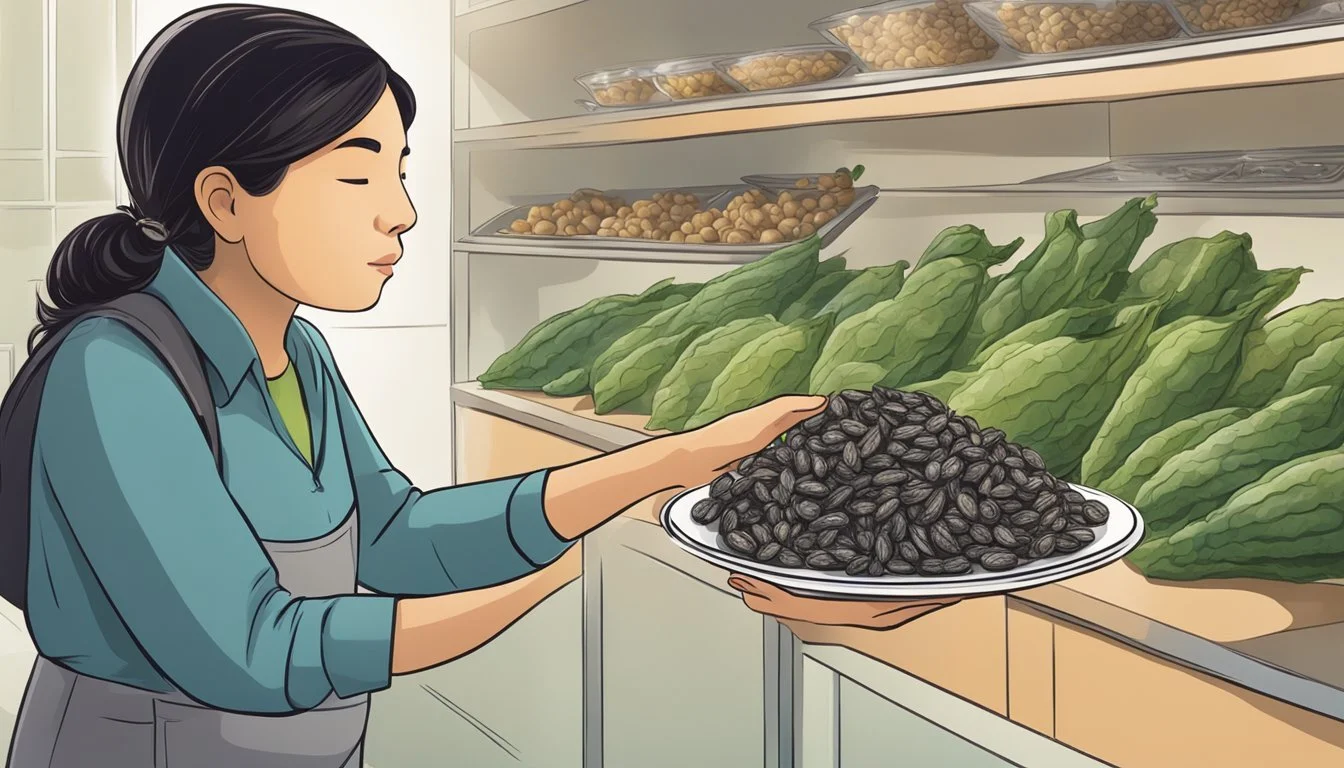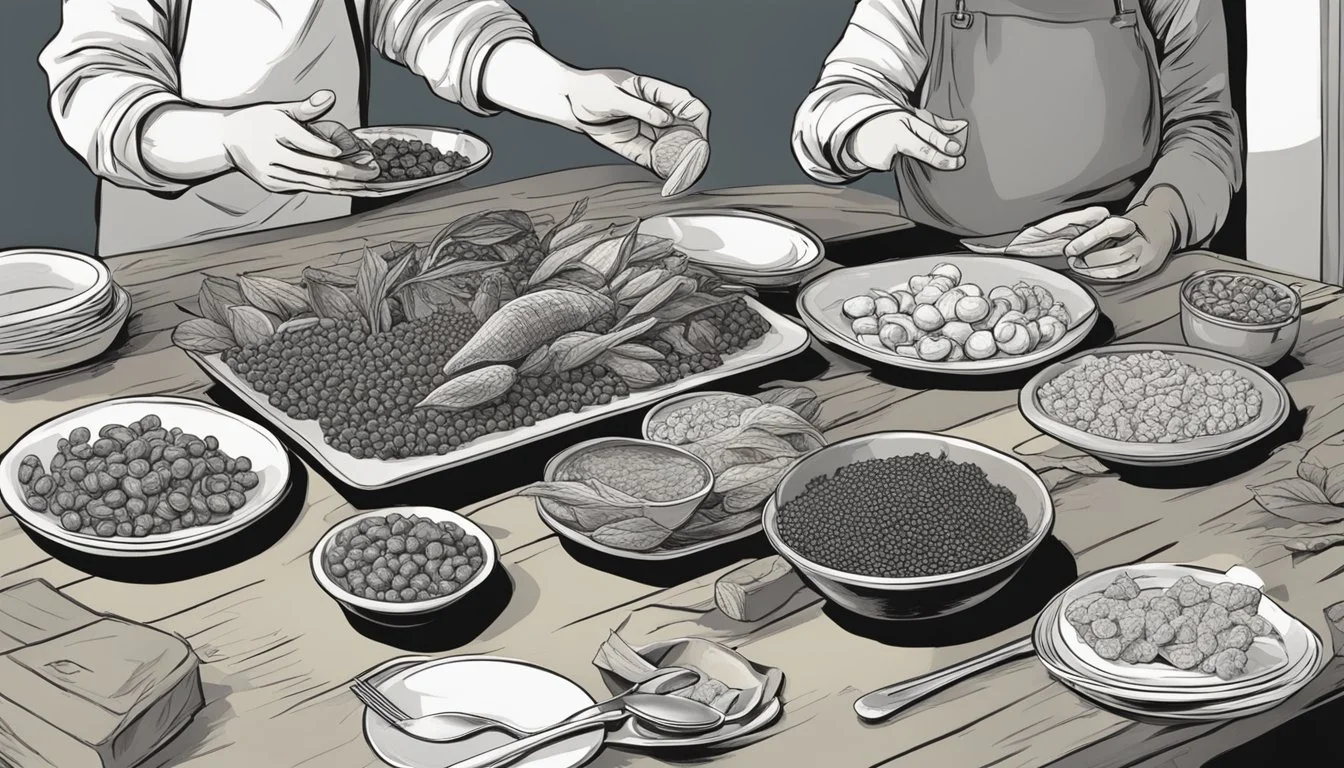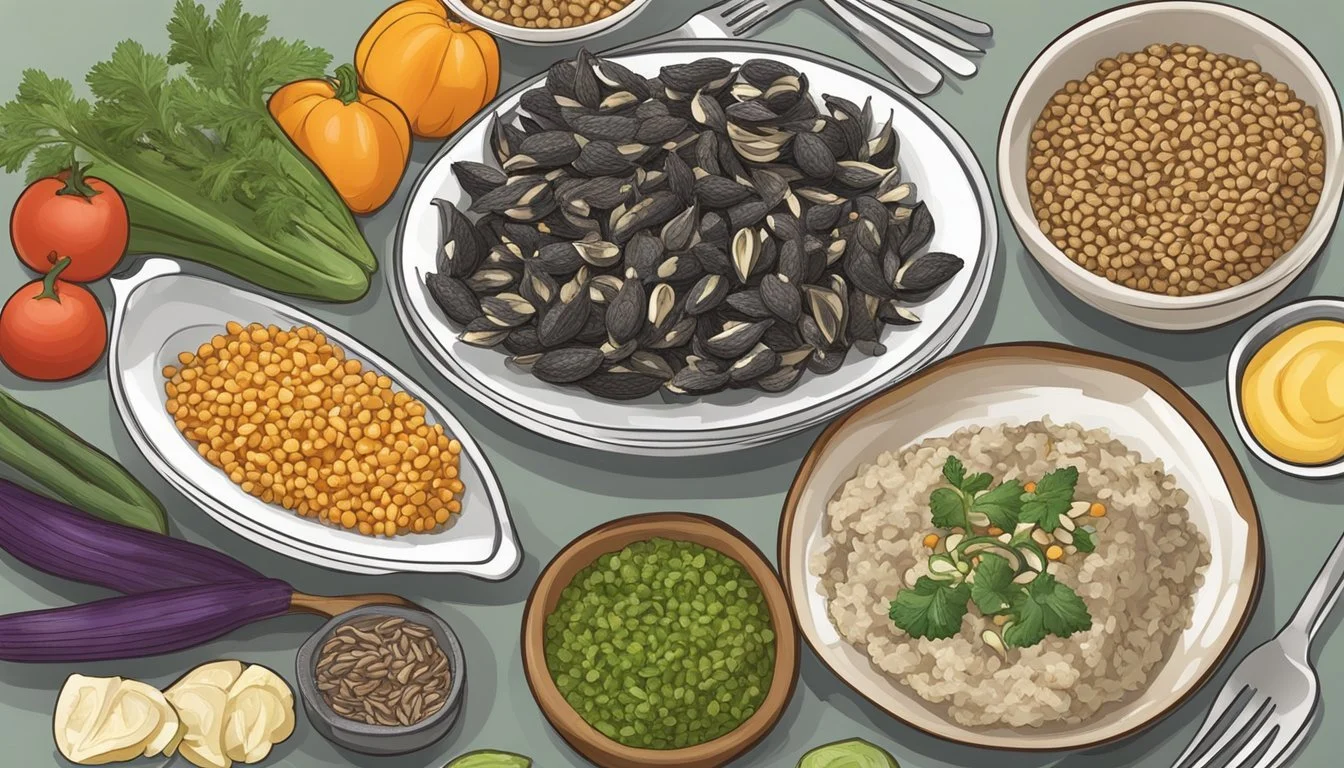Can Diabetics Eat Huitlacoche?
Understanding Its Nutritional Impact
For those managing diabetes, diet plays a crucial role in maintaining stable blood sugar levels. A lesser-known ingredient that is gaining popularity among health-conscious eaters is huitlacoche, a type of corn fungus often referred to as Mexican truffle. Diabetics can eat huitlacoche as it provides several health benefits, including a low glycemic index, which helps in maintaining stable blood sugar levels.
Huitlacoche is rich in fiber, vitamins, and amino acids, making it not only a safe option but also beneficial for those with diabetes. Its unique flavor and texture can enhance various dishes, offering a nutritious alternative to more conventional ingredients. Incorporating huitlacoche into meals can diversify a diabetic-friendly diet while keeping glucose levels in check.
Exploring new ingredients like huitlacoche can bring variety and excitement to a diabetic meal plan. It's a delicious way to enjoy food without compromising one's health. By making mindful choices, diabetics can continue to experience a wide range of flavors and cuisines.
Understanding Diabetes and Diet
Managing diabetes effectively requires a deep understanding of how different foods affect blood sugar levels. Key factors to consider include the impact of various macronutrients, as well as the critical role of fiber in regulating blood sugar.
The Impact of Food on Blood Sugar Levels
For individuals with diabetes, maintaining stable blood sugar levels is crucial. When foods high in carbohydrates are consumed, they are broken down into glucose in the bloodstream. This can cause a rapid spike in blood sugar levels.
Protein and fat have a different effect. They slow the absorption of carbohydrates, leading to a more gradual increase in blood sugar. Therefore, meals that combine carbohydrates with protein and healthy fats can help support better blood sugar control.
Macronutrients and Diabetes Management
Carbohydrates, proteins, and fats are the main types of macronutrients that need to be balanced in a diabetic diet.
Carbohydrates: They have the most significant effect on blood sugar levels. Diabetics are often advised to limit high-glycemic index carbs like white bread and sugary snacks.
Proteins: Essential for muscle repair and can help slow the absorption of carbohydrates. Good sources include lean meat, fish, eggs, and legumes.
Fats: Unsaturated fats such as those found in olive oil, nuts, and avocados are preferable. They can improve heart health, which is important for those with diabetes.
Role of Fiber in Blood Sugar Regulation
Fiber is a critical component in managing diabetes. It helps slow the digestion of carbohydrates, preventing rapid blood sugar spikes. Soluble fiber, found in foods like oats, beans, and fruits, is especially effective in this regard.
Additionally, diets high in fiber can improve overall blood sugar control and support weight management. Fiber also promotes a healthy digestive system and can lower cholesterol levels, further benefiting diabetic patients.
Incorporating fiber-rich foods into every meal is beneficial. Examples of high-fiber foods include leafy greens, whole grains, nuts, seeds, and certain fruits like apples and pears.
What Is Huitlacoche?
Huitlacoche, also known as corn smut or Mexican truffle, is a unique delicacy celebrated for its nutritional richness and culinary versatility. Renowned for its umami flavor, huitlacoche offers an array of health benefits and can be incorporated into various recipes.
Nutritional Profile of Huitlacoche
Huitlacoche is packed with essential nutrients, making it an excellent addition to a balanced diet. It provides notable amounts of protein and fiber, which are crucial for maintaining a healthy digestive system and supporting muscle function.
Vitamins such as B1, B2, and B3 are abundant, contributing to energy production and overall cellular function. This fungus also contains significant levels of minerals like magnesium, phosphorus, and calcium. These minerals are vital for bone health, nerve function, and metabolic processes.
Furthermore, huitlacoche is rich in antioxidants, which help protect cells from oxidative stress and inflammation. This nutritional profile makes it suitable for those looking to enhance their diet with beneficial nutrients.
Culinary Uses of Huitlacoche
Huitlacoche's distinct, earthy flavor lends itself to a variety of culinary applications. In Mexican cuisine, it's often used in quesadillas, soups, and sauces. To prepare it, sauté onions and garlic in a pot, then add huitlacoche and corn, cooking for a few minutes. Vegetable broth can be added for soups.
The umami taste of huitlacoche enhances dishes without the need for excessive salt or fat. It can be found in fresh, canned, frozen, or dehydrated forms, each with its preparation methods. For example, dehydrated huitlacoche can be rehydrated in water before cooking.
This versatile ingredient is prized not only for its taste but also for its adaptability in various recipes, making it a valuable addition to many diets.
Benefits of Huitlacoche for Diabetics
Huitlacoche offers nutritional benefits that can aid in managing diabetes. Its low glycemic index and nutrient-rich profile make it an excellent option for those seeking to control blood sugar levels while maintaining a balanced diet.
Low Glycemic Index Food
Huitlacoche is characterized by its low glycemic index. Foods with a low glycemic index are crucial for people with diabetes as they help ensure a slow, steady release of glucose into the bloodstream. This gradual release helps in avoiding spikes in blood sugar levels.
The mushroom-like fungal growth found on corn kernels, huitlacoche contains complex carbohydrates and fibers that slow down sugar absorption. This can lead to improved blood sugar control and reduced risk of insulin spikes.
Contribution to a Balanced Diet
A balanced diet is fundamental for managing diabetes, and huitlacoche can be a valuable part of such a diet. It is rich in important nutrients such as folate, niacin, riboflavin, potassium, iron, and zinc. These nutrients support various metabolic functions and contribute to overall health.
Moreover, huitlacoche is a good source of dietary fiber. Fiber is essential for diabetics as it aids in maintaining blood sugar stability by slowing digestion and sugar absorption. Including huitlacoche in meals can thus enhance nutritional intake while supporting blood sugar control.
In conclusion, huitlacoche’s low glycemic index and nutrient-rich profile make it beneficial for those with diabetes. This food can help manage blood sugar levels and contribute to a balanced diet, providing both nutritional value and aiding in diabetes management.
Incorporating Huitlacoche into a Diabetic Meal Plan
Huitlacoche, also known as "Mexican truffle," can be a nutritious addition to a diabetic meal plan. Its inclusion depends on proper serving suggestions, portion sizes, and meal planning to maintain stable blood sugar levels.
Serving Suggestions for Huitlacoche
Huitlacoche can be prepared in various ways to fit seamlessly into meals. Sautéing it with non-starchy vegetables like bell peppers and onions is a simple method. Combining it with proteins such as chicken or tofu can help balance the meal.
Another option is to blend huitlacoche into soups, using a low-sodium vegetable broth. Huitlacoche tacos, made with corn tortillas and topped with fresh salsa and avocados, can provide a wholesome, balanced dish.
Incorporating it into scrambled eggs or omelets for breakfast ensures a protein-rich start to the day. Always use healthy cooking methods like grilling or baking rather than frying.
Portion Size and Frequency
Managing portion sizes is crucial for diabetics. A typical serving of huitlacoche should be about half a cup. Eating it 2-3 times a week can add variety without overloading on carbohydrates.
Monitoring blood sugar levels before and after meals is essential. Huitlacoche contains carbohydrates, so it should be paired with other low-GI foods to prevent spikes in blood sugar levels.
Whole grains like quinoa or barley can accompany huitlacoche dishes, offering additional nutritional benefits. Keeping track of servings and portion sizes helps maintain a balanced diet, crucial for diabetes management.
Considerations and Precautions
When considering adding huitlacoche to a diabetic diet, it is essential to evaluate potential allergies and individual responses, as well as understand any associated risks and side effects.
Allergies and Individual Responses
Huitlacoche, also known as corn smut, may trigger allergic reactions in some individuals. People with known allergies to other fungi or molds should approach it with caution.
Symptoms of an allergic reaction might include:
Itching or swelling of the mouth, lips, or throat
Skin rashes or hives
Gastrointestinal distress
Individual responses to huitlacoche can vary. Diabetics should monitor their blood sugar levels closely after consuming huitlacoche to ensure it does not adversely affect their insulin needs. Personalized nutritional advice from a healthcare professional can provide more tailored insights.
Potential Risks and Side Effects
Huitlacoche contains carbohydrates, which can affect blood sugar levels. Even though the overall carbohydrate content might not be high, it's critical for diabetics to account for it in their daily carbohydrate intake.
Potential side effects could include digestive issues like bloating or diarrhea, particularly if huitlacoche is consumed in large quantities.
Another consideration is the potential presence of harmful pathogens or contaminants if huitlacoche is not properly sourced or cooked. Ensuring it is prepared safely can mitigate these risks.
Informed decisions and careful dietary planning can help diabetics enjoy huitlacoche without compromising their health.
Complementary Foods for Diabetics
In managing diabetes, including a variety of vegetables, fruits, and sources of healthy fats and proteins can play a crucial role in maintaining stable blood sugar levels. Specific selections can also provide essential nutrients and support metabolic health.
Vegetables and Fruits in a Diabetic Diet
Non-starchy vegetables are highly recommended for diabetics due to their low carbohydrate content and high fiber. Options like broccoli, spinach, and bell peppers can provide necessary vitamins and minerals without spiking blood sugar. Berries such as strawberries and blueberries are excellent fruit choices since they have a lower glycemic index and are rich in antioxidants. Whole fruits, consumed in moderation, are preferable over fruit juices which can cause rapid increases in blood glucose.
Vegetables Fruits Broccoli Berries Spinach Apples Bell Peppers Oranges
Selecting Healthy Fats and Proteins
Including healthy fats and proteins in a diabetic diet can aid in satiety and provide essential nutrients without significantly impacting blood sugar levels. Nuts and seeds, like almonds and chia seeds, offer a combination of healthy fats and protein. Lean meats, such as chicken and turkey, along with plant-based proteins like beans and lentils, are crucial. Selecting fatty fish like salmon provides omega-3 fatty acids beneficial for heart health, a common concern for those with Type 2 Diabetes.
Preferred Protein Sources:
Chicken
Turkey
Fish (e.g., salmon)
Healthy Fats:
Avocados
Nuts (e.g., almonds, walnuts)
Seeds (e.g., chia, flaxseed)
Conclusion
Huitlacoche, also known as corn smut, offers a variety of health benefits that can be particularly useful for diabetics.
Nutrient-Rich Food: Huitlacoche is packed with essential vitamins and minerals such as folate, niacin, potassium, iron, and zinc. These nutrients support overall health and can contribute to a balanced diet for diabetics.
Antioxidant Properties: The fungus contains antioxidants that help protect cells from damage. This can be beneficial for managing diabetes and maintaining a healthy body.
Dietary Integration: For diabetics, incorporating huitlacoche into meals can add nutritional value without significantly impacting blood sugar levels. Options include adding it to soups, stews, and sautés.
Avoid Overconsumption: While huitlacoche is nutritious, moderation is key. Diabetics should consult their healthcare provider to determine the appropriate portion sizes.
Final Notes: Huitlacoche can be a valuable addition to a diabetic diet. Its unique nutritional profile can help manage diabetes and support overall health.

